Poole Harbour D-Day Tank Landing Craft: The last of a dying breed?
06/12/2017 | Nick Mason
First of all, a quick introduction. My name is Nick Mason, and I'm extremely excited to be stepping into the shoes of Megan Clement as the new CITiZAN Outreach Archaeologist for the North! Previously I worked for Museum of London Archaeology, and with Archdrone doing aerial surveys. Although I’m enjoying York and have the northern coastlines to explore now, I recently completed a degree in Maritime Archaeology all the way down in Bournemouth, where I did a thesis examining some of the Second World War archaeology in Poole Harbour...
The story of D-Day will be familiar to most, and some readers will even have seen surviving vessels, tanks and aircraft at museums around the coast. The most recognisable will be the little American-designed Higgins Boats, or Landing Craft, Vehicle, Personnel (LCVP). Think the first few minutes of Saving Private Ryan, or an example on the CITiZAN map. But there were a myriad of landing craft designs churned out and modified during the war, carrying out roles as diverse as firing rocket salvoes, mobile repair and cooking stations, and... landing up to nine Sherman tanks at once!
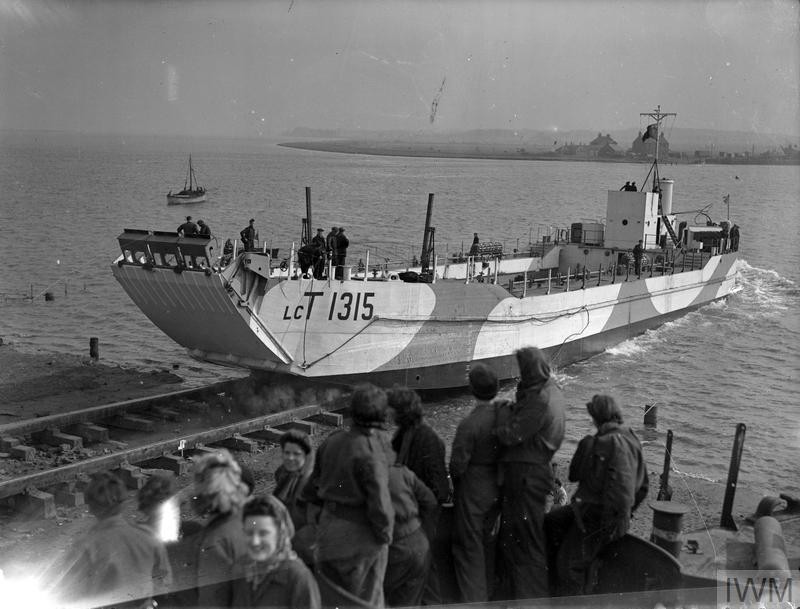
At the start of the war the Royal Navy had no means of speedily delivering the increasingly large fighting vehicles of the era onto beaches. The failures of the Gallipoli campaign in the First World War had not been forgotten and none other than Churchill pressured the Admiralty to develop larger and more capable landing craft. In 1940, the Landing Craft, Tank (LCT) Mark 1 was born. Several further iterations appeared, growing in size until the Mark 4 reached 187ft long, with a beam of 38ft.
After the evacuation at Dunkirk and the failure of the Dieppe raid in 1942, more hard lessons were learnt about landing troops and vehicles on hostile beaches. I’m sure the importance of the success of D-Day for the Allies needs no underlining. The close fire support that tanks could give spearhead troops was vital for establishing and holding a beachhead. So what became of the hundreds of heroic small craft that delivered those tanks? Remarkably few are known to survive today. In fact, National Historic Ships UK reckon that apart from HMS Belfast, only one other D-Day veteran survives, LCT 7074, ‘Landfall’. She is a Mark 3 tank carrier, and is undergoing restoration at the National Museum of the Royal Navy in Portsmouth at the moment.
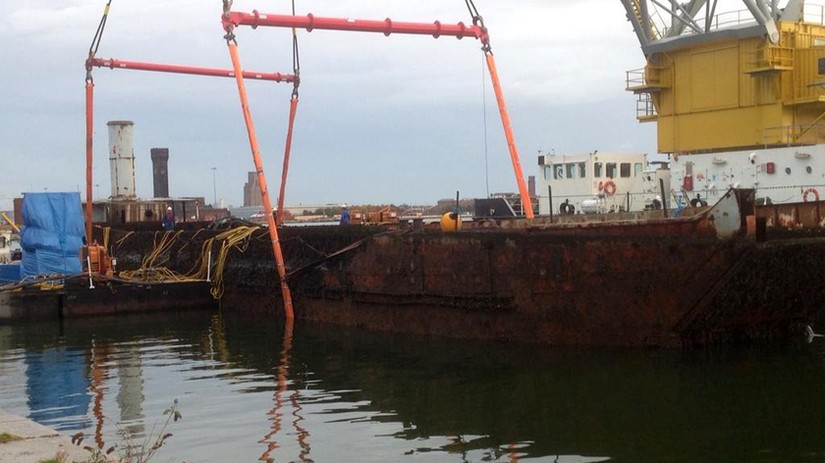
However, in Poole Harbour are the very obvious remains of two large landing craft. They were deliberately dumped there sometime in 1950 as part of the ‘Make Do and Mend’ attitude, acting as seawall defences for the port. And there they have remained, quietly rotting away until now. Unfortunately they are due for removal soon as the port has grown round them, and the expansion needs to continue. As such, a project of preservation by record was started by Bournemouth University. Access to the hulked remains is dangerous: they form part of a working port, and are very unstable, so we used a drone to record the vessels in place. This new technology can be very useful for some coastal archaeology when foot access is too difficult. Although there is a lot of damage and the engines have been removed, the survey showed some structural strength and the presence of some of the anti-air armaments. The information tells us about the potential preservation of similar wrecks, targets elements for removal and restoration, and will inform the deconstruction team when the time comes for them to be removed. The survey also showed that they are Mark 4 LCT: the last known examples above the waterline.
The desk-based research of the vessels also revealed something very interesting. A photograph from a local history book (Hillier, 1992) shows the forward-most vessel still with emblems, proving she was LCT 728, and served with the Third Division on D-Day! Whilst all surviving landing craft are important, the discovery of another D-Day veteran is particularly exciting.
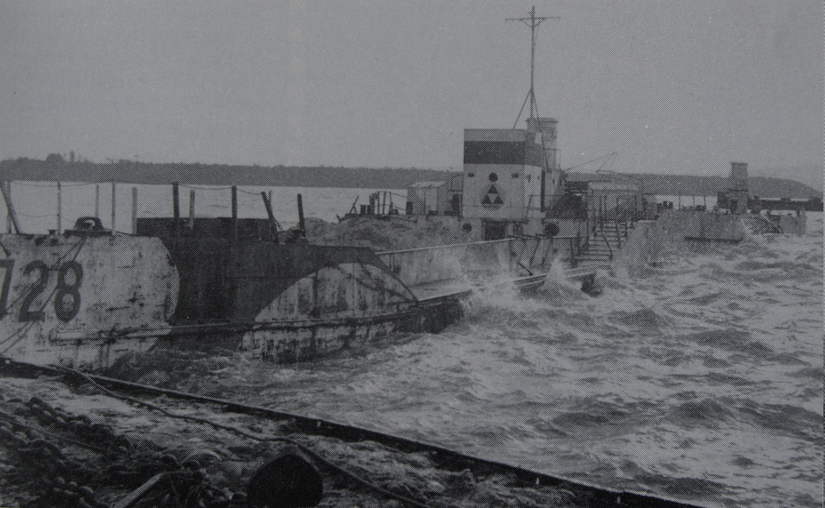
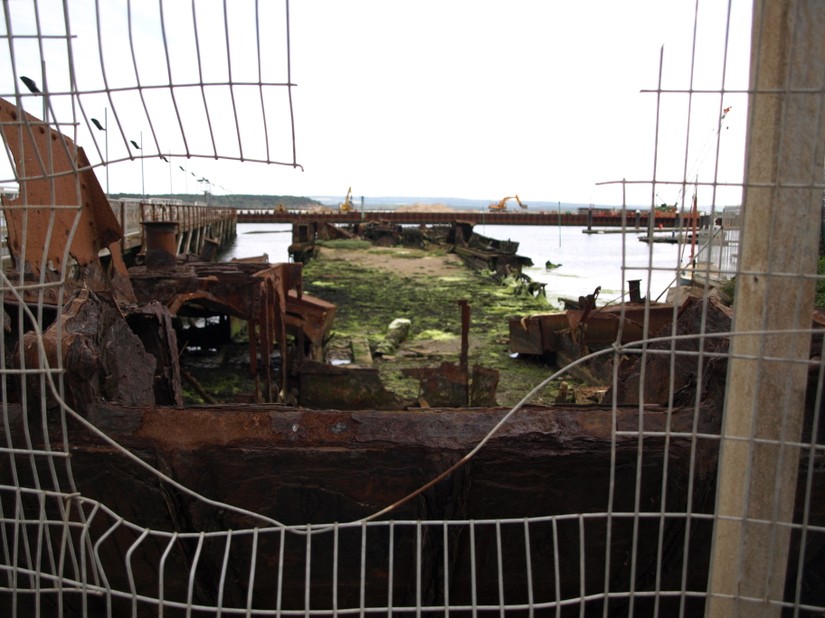
So there you have it. One more known survivor of the invasion of Normandy, and the last known Mark 4, is sitting quietly in Poole Harbour awaiting her fate with development. If you want to go and have a look at this special craft, you will have to ask permission from Poole Harbour Commission first. However, another aspect of the aerial survey was that a 3D model was constructed of the site, available to view below. The craft are also on our own interactive coastal map, and listed on the Historic Environment Record.
Apologies to the CITiZAN Southwest team for sneaking in on your patch! I’m looking forward to getting stuck in on the foreshores of the north, and meeting all our volunteers very soon, but in the meantime Merry Christmas!
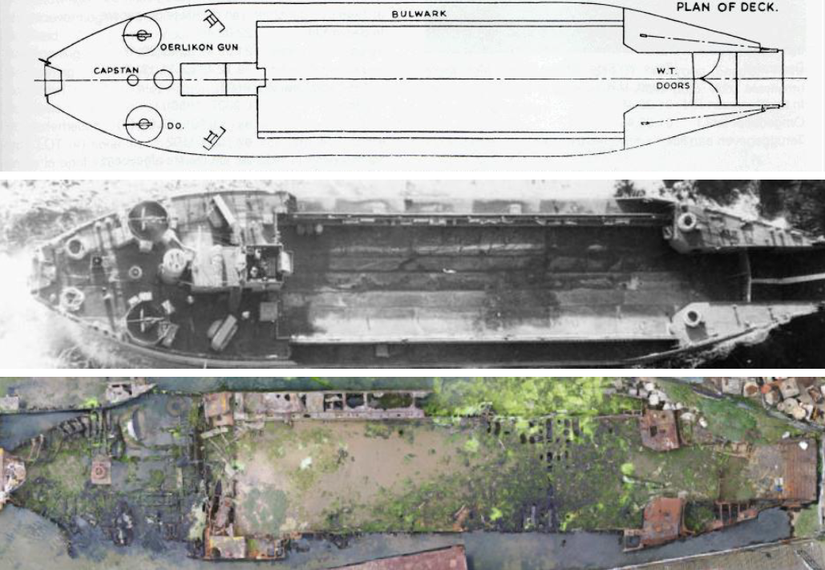
Please get in touch if you have any questions about the Poole survey. See below for a short bibliography on the LCT wrecks.
Andrews, I. 1994: Poole: A Pictorial History. London: Phillimore.
Dorset Historic Environment Record 2017: MDO25077, MDO25078 and MWX5215.
Hillier, J. 1992: Poole After World War II 1945-1952. Poole: Poole Historical Trust.
Le Pard, G. 2011: Dorset Then and Now from the Air. Wellington: Halsgrove.
National Historic Ships 2014: LCT 7074.
Pomeroy, C. A. 1995: Military Dorset Today: Second World War scenes and settings that can still be seen 50 years on. Rushden: Silver Link.








